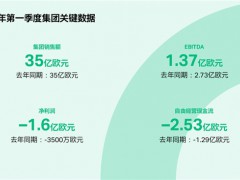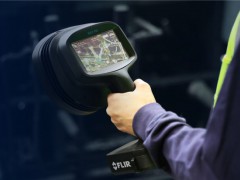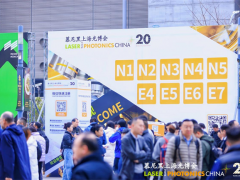據(jù)美國彭博新聞社2022年5月11日?qǐng)?bào)道,由克里夫·阿斯尼斯共同創(chuàng)辦的全球第二大對(duì)沖基金美國AQR資本管理公司日前提出了一種測(cè)量供應(yīng)鏈氣候風(fēng)險(xiǎn)的新方法。
今天,大多數(shù)投資者關(guān)注的是范圍3的排放——企業(yè)供應(yīng)鏈或客戶使用其產(chǎn)品時(shí)產(chǎn)生的排放。 AQR資本管理公司表示,范圍3的可用數(shù)據(jù)因公司而異,通常不準(zhǔn)確。
AQR資本管理公司表示,更好、更準(zhǔn)確的測(cè)量標(biāo)準(zhǔn)是關(guān)注公司客戶和供應(yīng)商的整體氣候敞口。 換句話說,AQR資本管理公司測(cè)量的是一家公司與可能因氣候相關(guān)風(fēng)險(xiǎn)而遭受損失甚至倒閉的合作伙伴開展業(yè)務(wù)的程度。
舉個(gè)例子,AQR資本管理公司調(diào)查一家美國支付服務(wù)公司,這家支付服務(wù)公司表面上看起來和其他公司一樣環(huán)保。AQR資本管理公司的初步調(diào)查發(fā)現(xiàn),其范圍1、范圍2和范圍3的排放量低于行業(yè)競(jìng)爭(zhēng)對(duì)手。但根據(jù)AQR資本管理公司的數(shù)據(jù),監(jiān)管文件顯示這家支付服務(wù)公司的客戶包括3家在2011年總收入中約占21%的大型石油公司。
AQR資本管理公司的研究主管盧卡斯·波莫爾斯基說,這個(gè)例子——雖然是過時(shí)例子——突出了AQR資本管理公司的方法和范圍3排放量的簡(jiǎn)單讀數(shù)之間的關(guān)鍵區(qū)別。范圍3將特定公司產(chǎn)品的排放與供應(yīng)商和客戶隔離開來——即使他們的總體排放量已知,這也是一個(gè)令人生畏的挑戰(zhàn)。
相比之下,AQR資本管理公司的方法是專注于“經(jīng)濟(jì)聯(lián)系”。這意味著要評(píng)估一家公司有多少間接氣候風(fēng)險(xiǎn),方法是確定其收入中有多少來自自身氣候風(fēng)險(xiǎn)較大的客戶,以及它在氣候風(fēng)險(xiǎn)公司的供應(yīng)上花了多少錢。波莫爾斯基說,這與這些暴露的原因是客戶還是生產(chǎn)商的產(chǎn)品無關(guān)。它衡量的是一個(gè)被低估的風(fēng)險(xiǎn),因?yàn)橐粋€(gè)非常環(huán)保的公司可能在其供應(yīng)鏈和客戶鏈上間接暴露于氣候風(fēng)險(xiǎn)。
波莫爾斯基說:“范圍3確實(shí)很重要,也很有價(jià)值,但關(guān)于范圍3的數(shù)據(jù)充其量是值得懷疑的。”
AQR資本管理公司管理著大約1100億美元的資金,該公司表示,他們利用供應(yīng)鏈數(shù)據(jù)進(jìn)行交易是因?yàn)檫@些數(shù)據(jù)是可驗(yàn)證的,而且氣候相關(guān)的風(fēng)險(xiǎn)在全球范圍內(nèi)只會(huì)不斷增加。AQR資本管理公司表示,一些該公司客戶也對(duì)使用其指標(biāo)和策略表現(xiàn)出興趣。
波莫爾斯基表示,從投資者的角度來看,關(guān)鍵問題是他們的投資組合在整個(gè)供應(yīng)鏈中面臨的環(huán)境相關(guān)風(fēng)險(xiǎn)有多大。在極端情況下,如果一家公司的客戶因氣候相關(guān)原因破產(chǎn),該公司面臨的風(fēng)險(xiǎn)有多大? 公司會(huì)因?yàn)榭蛻舻钠飘a(chǎn)而損失有意義的收入嗎?
AQR資本管理公司的研究超出了上述氣候風(fēng)險(xiǎn)的應(yīng)用范圍。波莫爾斯基說:“我們的措施還可以捕捉到潛在的離岸排放,即當(dāng)一家公司從自己生產(chǎn)碳排放最密集的部件轉(zhuǎn)向從供應(yīng)商那里購買它們時(shí)。”
當(dāng)投資者向企業(yè)施壓要求它們變得更環(huán)保時(shí),企業(yè)高管們可能會(huì)關(guān)閉它們碳排放最密集的資產(chǎn),轉(zhuǎn)而從第三方供應(yīng)商那里購買相同的原料。這只是將碳轉(zhuǎn)移到整個(gè)供應(yīng)鏈,對(duì)全球排放沒有凈影響。 AQR資本管理公司的指標(biāo)可以幫助投資者監(jiān)控這種行為,而范圍3的數(shù)據(jù)仍然很少。
最后,AQR資本管理公司的研究為投資者提供了一種分析通過客戶和供應(yīng)商嚴(yán)重暴露于氣候變化影響下的公司的方法。例如,如果一家公司的客戶排放了大量的二氧化碳或擁有大量的化石燃料儲(chǔ)備,那么這家公司就間接地繼承了這種暴露,即使它本身可能看起來是“綠色的”。
波莫爾斯基說:“雖然我們的測(cè)量方法與范圍3的排放有相似之處,但我們的測(cè)量方法捕捉到的信息有些不同,而且利用許多投資者已經(jīng)獲得的數(shù)據(jù),更容易評(píng)估,這是一個(gè)重要的優(yōu)勢(shì)。”
李峻 編譯自 美國彭博新聞社
原文如下:
Investment Firm Discovers New Way to Measure Supply-Chain Climate Risks
AQR Capital Management, the investment firm co-founded by Cliff Asness, has come up with a new way to measure supply-chain climate risks.
Today, most investors focus on Scope 3 emissions—the emissions generated as a function of a company’s supply chain or through the use of its products by customers. AQR says the data available on Scope 3 vary from company to company and is often imprecise.
AQR says the better and more accurate metric is focusing on the overall climate exposure of a company’s customers and suppliers. In other words, AQR measures the extent to which a company does business with partner firms that may suffer, or even go out of business, because of climate-related risks.
As an example, AQR examined a U.S. payments services company that seems on its face as green as any business around. An initial AQR review found its Scope 1, Scope 2 and Scope 3 emissions were lower than industry competitors. But regulatory filings showed that the company’s customers included three large oil companies, which accounted for about 21% of its consolidated revenue as recently as 2011, according to AQR.
This example—while dated—highlights the key difference between AQR's methodology and a simple reading of Scope 3 emissions, said Lukasz Pomorski, AQR’s head of research. Scope 3 isolates the emissions from suppliers and customers that are attributable to a given company’s products—a daunting challenge even when their overall emissions are known.
By contrast, AQR’s approach is to focus on “economic linkages.” This means assessing how much indirect climate-risk exposure a company has by identifying what portion of its revenue comes from customers with large climate exposures themselves, and how much it spends on supplies from climate-risky firms. This is regardless of whether such exposures are attributable to the client or producer’s product, Pomorski said. It measures an underappreciated risk, because a very green firm may be indirectly exposed to climate risks across its supply and customer chains.
“It’s true that Scope 3 is important and relevant, but the data around Scope 3 are questionable at best,” he said.
AQR, which oversees about $110 billion, says it trades on this supply-chain data because it’s verifiable and climate-related risks are only increasing globally. Some AQR clients also have shown interest in the metric and strategies that use it, the firm said.
From an investors’ perspective, the essential question is how exposed are their portfolios to environmental-related risks across the supply chain, Pomorski said. At the extreme, how at risk is a company if one of its customers goes bankrupt for climate-related reasons? Will the company lose meaningful revenue because of client’s bankruptcy?
AQR’s research goes beyond the climate-risk application outlined above.
“Our measure can also capture potential emissions offshoring, which occurs when a company switches from making the most carbon-intensive components in-house to buying them from suppliers,” Pomorski said.
As investors pressure companies to become greener, corporate executives may respond by shutting down their most carbon-intense assets and instead buying the same ingredients from third-party suppliers. This just shifts carbon across the supply chain, with no net effect for global emissions. AQR’s metric could help investors monitor such behavior while Scope 3 data remains sparse.
In the end, AQR's research provides a way for investors to analyze companies that are heavily exposed to climate change via their customers and suppliers. For example, if a company’s customer emits a lot of CO2 or has lots of fossil-fuel reserves, then that company indirectly inherits that exposure even if by itself it may seem “green.”
“While there are similarities between our measure and Scope 3 emissions, our metric captures somewhat different information and has a meaningful advantage of being much easier to assess, using data many investors already have access to,” Pomorski said.
免責(zé)聲明:本網(wǎng)轉(zhuǎn)載自其它媒體的文章及圖片,目的在于弘揚(yáng)石化精神,傳遞更多石化信息,宣傳國家石化產(chǎn)業(yè)政策,展示國家石化產(chǎn)業(yè)形象,參與國際石化產(chǎn)業(yè)輿論競(jìng)爭(zhēng),提高國際石化產(chǎn)業(yè)話語權(quán),并不代表本網(wǎng)贊同其觀點(diǎn)和對(duì)其真實(shí)性負(fù)責(zé),在此我們謹(jǐn)向原作者和原媒體致以崇高敬意。如果您認(rèn)為本站文章及圖片侵犯了您的版權(quán),請(qǐng)與我們聯(lián)系,我們將第一時(shí)間刪除。







